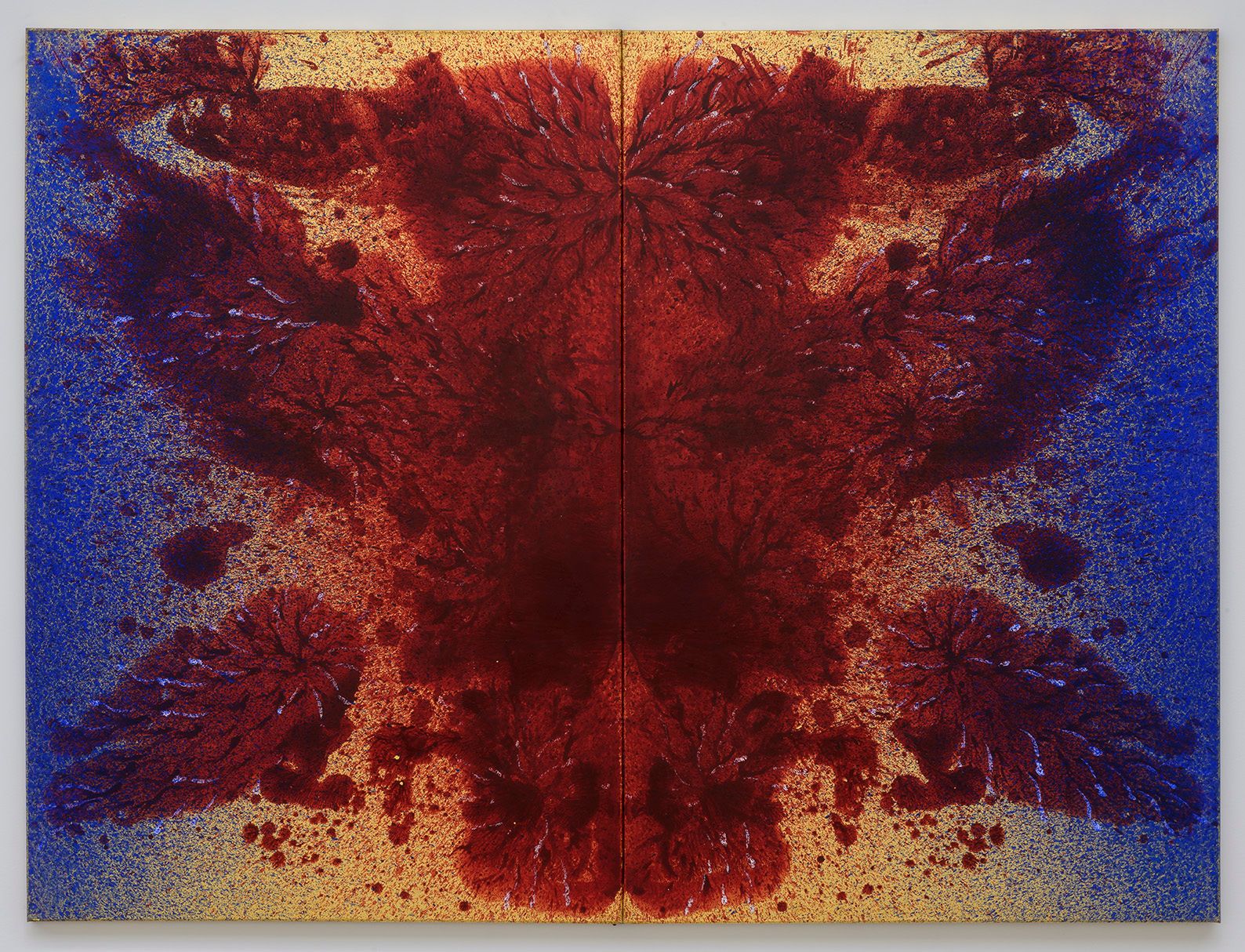
Do You Remember Still, How It Was Once
Imran Qureshi (b. 1972) is a renowned contemporary artist who reworks the traditional art of miniature painting with a conceptual approach. His paintings are visually rooted in the regional style of the Mughal era (16th–19th century), which Imran Qureshi mastered at the National College of Art, in Lahore, Pakistan, where he teaches. Reflecting upon the socio-political conditions of his native Pakistan, Imran Qureshi produces powerful images which are both strikingly evocative and beautiful. A dual sense of tenderness and tragedy permeates his oeuvre, as Qureshi reflects upon the close proximity between violence and beauty, chaos and order, life and the end of life.
Do you remember still, how it was once (2019) is part of a series of five new works which were made after the Christchurch mosque shootings in New Zealand, on 15 March 2019. This series was conceived after a photograph which was widely shared on social media in the immediate aftermath of the attacks in Christchurch, showing a blood-stained book of the Qur’an which was purportedly found in one of the Mosques [Fig. 1]. With this series, Imran Qureshi reflects upon the increasing proliferation of images of violence which shape our visual culture, and our growing insensitivity to them, in the age of the internet, terrorism and ‘fake news.’ Indeed, the image was found subsequently to have been wrongly attributed to the attack, with some commentators linking it back to earlier drones strikes which took place in Somalia the preceding year. Upon closer inspection, the blood-stained pages reveal a disturbingly formal motif which is reflected in these works. The proximity of beauty to violence, of order to disorder, is a fact of life which the artist continually addresses throughout his practice.
The use of red-paint, which is set across a gold-leaf ground, first entered the artist’s work after he witnessed a series of suicide bombings near his home in Lahore, Pakistan. In this way, Imran Qureshi sees the colours in his work as two opposites entering a dialogue. The luminosity of gold-leaf, is set in stark contrast with the opacity of red paint, to evoke luminosity and the divine. The tonal gradation from gold to blue is a feature of miniature art which reveals Qureshi’s superb craftsmanship, transposed to a large-scale. Moreover, the contrast between blue and gold is reminiscent of the Mughal tradition, a visual allusion to the pages of the blood-stained manuscript. Though a duality is implied by the use of two canvases, the symmetrical disposition of red paint arranges the picture into one single coherent whole. Indeed, throughout his work, Imran Qureshi gradually brings order into a disorderly world. With the meticulous attention of a miniaturist painter, he slowly works through the paint, to reveal delicately drawn floral motifs which evoke the possibility of renewal and life. Though he continually works between opposites, Imran Qureshi ultimately presents us with a hopeful message, allowing between the fine line which separates life from death, violence from beauty, for the single motif of a flower to emerge from the chaos.
Imran Qureshi came to international prominence following his 2013 rooftop installation at the Metropolitan Museum of Art in New York. In 2016, Imran Qureshi was invited to install Where the Shadows are so Deep, his first public commission in the United Kingdom, for the Barbican, in London. His work is featured in major collections and museums, including the Art Institute of Chicago, Chicago, the British Museum, London, the Fukoaka Asian Art Museum, Japan and the Queensland Art Gallery, Brisbane, Australia.
2019
Acrylic paint and gold leaf on canvas
IQ 1154
© Imran Qureshi, Galerie Thaddaeus Ropac, 2019
